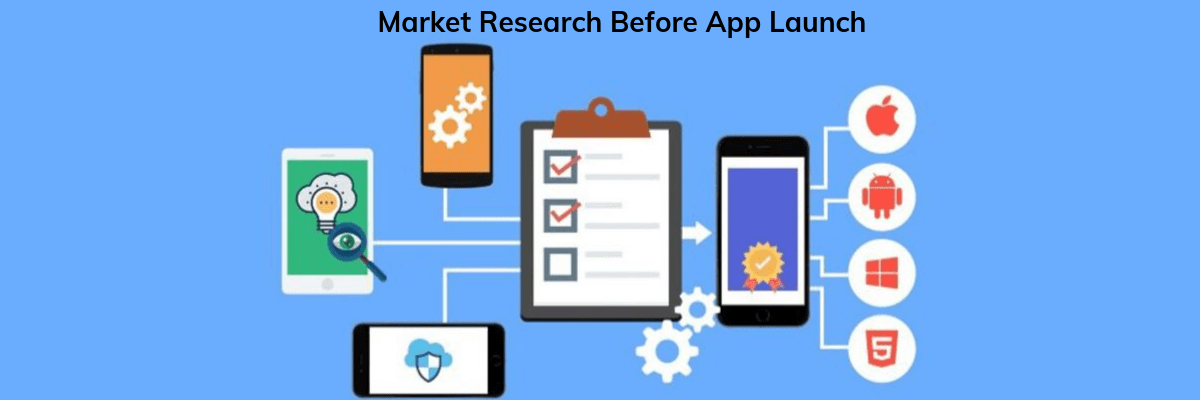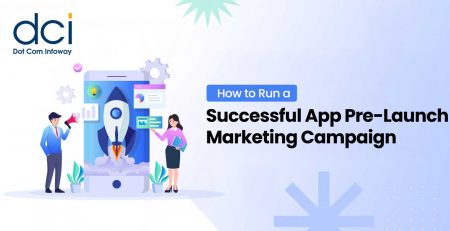How to Conduct Market Research Before Launching Your App?
Launching an app without conducting appropriate market research first is like taking a shot in the dark. There is too much risk involved, and it really isn’t something that a serious app developer would even consider doing. Correct mobile app marketing can only be assured if it is backed up by solid app market research.
Because ultimately, only you can know what your audience needs and it’s up to you how you’ll shape your app’s features based on the data you gather. What does it take to ensure you are taking the right steps in mobile marketing? Well, with the help of the following pointers, you would certainly be able to steer your strategy towards the right direction.

-
Identifying Your Users’ Problems
Before any kind of app launch (or even development, for that matter) can be conducted, the first logical step to take involves knowing how your app will solve your users’ issues. What’s the most effective way to start doing this? Simple. Ask questions. To reach out to your users not only gives you the information you need, but it also establishes your relationship with them.
For this, social media shines a lot because they remain popular platforms where people freely voice out their thoughts, positive or negative. Ask them what their misgivings are regarding issues are directly related to your app. Once you hear them out, you won’t have a hard time pinpointing their common problems. This still beats just relying on secondary sources of information.
-
Competitor Analysis
Another preliminary step conducted by successful mobile app marketing campaigns entails analyzing your competition. It’s a basic strategy that has been detailed centuries ago by Sun Tzu’s quote in his book, The Art of War: “If you know your enemy and know yourself, you need not fear the result of many battles.” Once you know the weakness and strengths of your competitors, you will have crossed out a possible major hurdle to your marketing efforts in the future.
How do you do this correctly? Well, start by looking at the number of downloads the apps are receiving, their price, and their current ranks. It also wouldn’t hurt to get insights on their earnings, their overall web presence, and their own marketing campaigns. Tools like App Annie and Alexa can help you immensely in this regard.
-
Secondary Data Analysis
Of course, what’s app marketing without its corresponding data analysis. Secondary data analysis involves taking a good look at market trends and growth rates. And mind you, these vary a lot because of the pace in which the mobile industry is growing.
What trends can you capitalize on to leverage your app’s features to your users? Will these trends have a lasting impact on the category where your app is in? How fast do most apps launched in your chosen field grow? Growth rate normally translates to rate of increase in volume of users and downloads. All of these integral questions can be answered once secondary data analysis is done.
-
Primary Data Analysis
Primary data analysis, on the other hand, comprises more traditional approaches to app market research. These techniques prove to still be effective, after all, and why change something that’s not broken?
User surveys still provide valuable information regarding the immediate needs and wants of your audience, and they can be used to easily get to know your targeted audience better by arranging focus study groups. This still gives plenty of opportunities to gain valuable feedback and even ideas, personally voiced out by your users.
-
Creating Value Proposition
You can only ever create an effective value proposition if you have a solid understanding of your users’ problems. Once you’ve accomplished that step, you can now begin to outline the benefits that your app gives in order to address those issues. Describe these advantages in detail so you can make the connection between your app and the problems crystal-clear to them.
Be sure to make your app stand apart from the competition as you do so as well, so you can readily give the reasons why your users should try your product after an app launch.

Need Help with Your Mobile App Marketing?
Our experts can help with your market research. Work with our award-winning marketing agency with 10+ years of experience in promoting mobile apps.
-
Business Model Creation
Of course, building your business model will always be a part of any kind of mobile app marketing. You can always use this revenue model as a guide, after all, which could prove to be vital after your app launch. And fret not, because you can simply follow a lot proven working models already available.
Will you be opting for a freemium model? Does it really suit your app’s features? Most of the time, freemium models work best for apps that can successfully prove to their users their value to them. Because only then will they be willing to invest money.
Besides freemium, there is also the in-app purchases, paid apps, and ad-centric models. All of these app business models provide perks based on the types of apps that they are implemented on, and it’s important for you to figure out the best model for your own app.
-
Defining Target Audience
It’s not just about knowing your users’ problems. While all the above-mentioned steps are equally important, failing to precisely target your audience or end user spells doom for your enterprise. Defining the target audience also clarifies the revenue model that is best for your app, besides knowing the other features you ought to add.
Start by thinking of what your app delivers. Is it a highly competitive gaming app with an in-app purchases model? Then you may want to reach out to potential hardcore gamers or “whales” that would be more than willing to spend lots of money to get ahead of their competition. This is but one specific example, though.
-
Finalizing the Channels to Acquire Users
User acquisition serves as one of the end goals of mobile app marketing besides, of course, profiting from your traffic. “Finalizing” could not be more stressed here, though, because user acquisition already involves preparing to invest in channels that offer the opportunity for it.
Organic traffic takes time to acquire and requires investing in Search Engine Optimization or App Store Optimization. Going for paid advertising and influencer marketing, on the other hand, certainly calls for a lot of money to be shelled out for testing different kinds of ad setups. Of course, you can mitigate this via thorough data analytics. Other channels include PR, email marketing, referrals, etc. Decide on what you are going to be mainly relying on in the long run so you wouldn’t waste too much time and money.
-
Marketing Communication Messages Creation
Communication follows marketing closely because the latter innately involves building relationships. And most of the time, it’s through your marketing message that you can achieve this. This shouldn’t be hard once you have a firm grasp of your users’ problems.
Identify their pains then craft a message that taps into those pains by adding emotional and psychological nuances to your message. This takes empathy and placing yourself in the shoes of your users, rather than bluntly laying out your app’s features. By getting your message across, you’ll be able to easily demonstrate how you are entirely unique compared to your competitors as well.
Summary
Results-driven mobile app marketing, as you can see, follows a strict adherence to tried and tested steps. Deviating from them might prove to be risky if you are still trying to test the waters. To recap, the first app market research steps following app pre launch activities you should certainly take are to identify your users’ problems and knowing whether you stand a chance against your possible competition.
Once these are verified, perform data analytics to gain more information about your users. With this done, you can now start actively underlining the value of your app and planning what business model you should use for it. Afterwards, make it a point to define the exact audience you are going to target then confirm the channels for user acquisition. Finally, be open to establishing a lasting relationship with your users by sending them marketing messages that they will actually care about.















